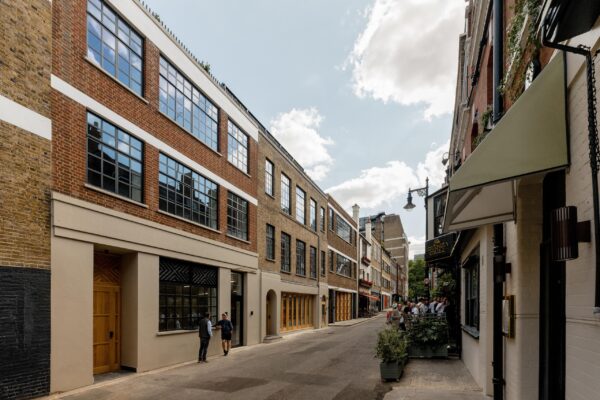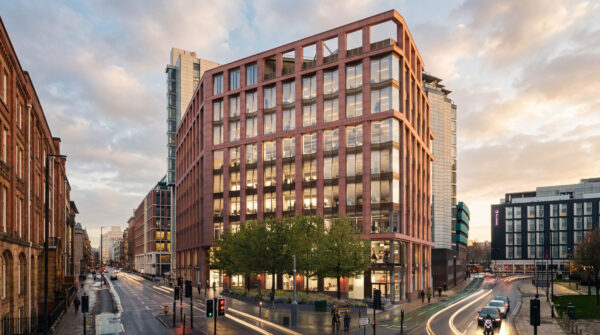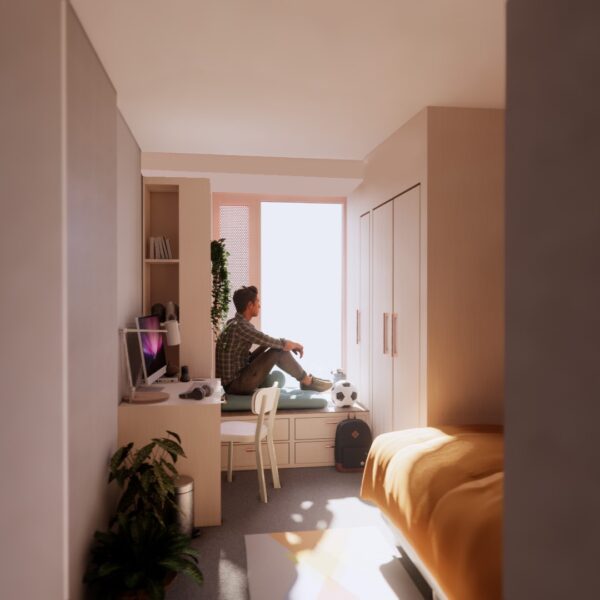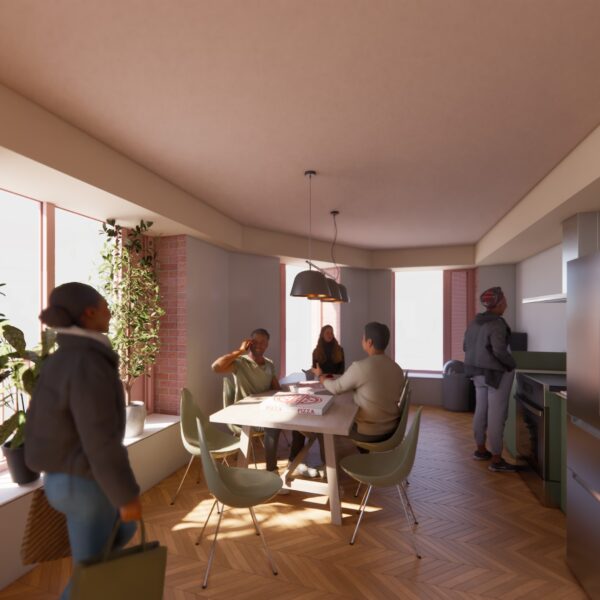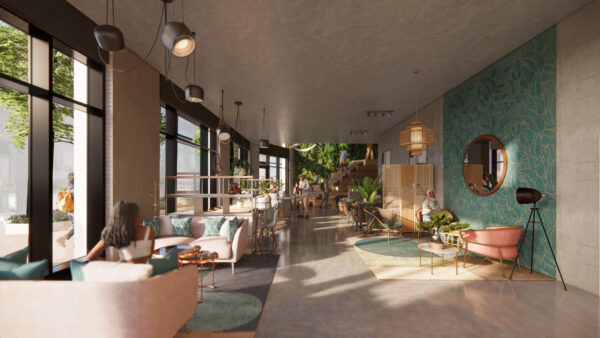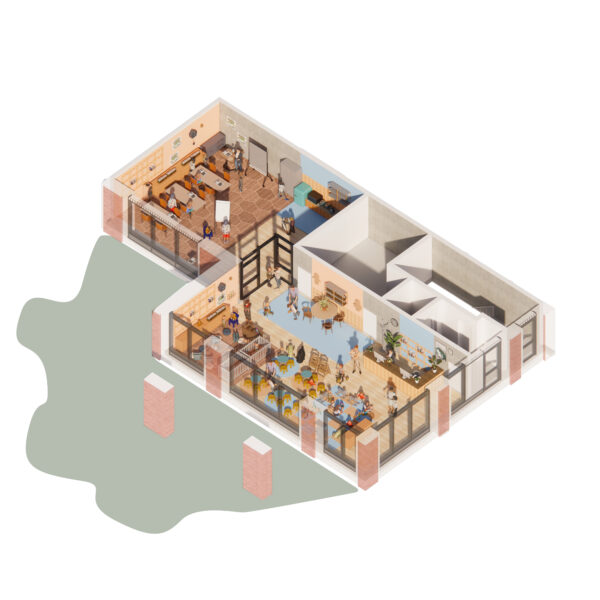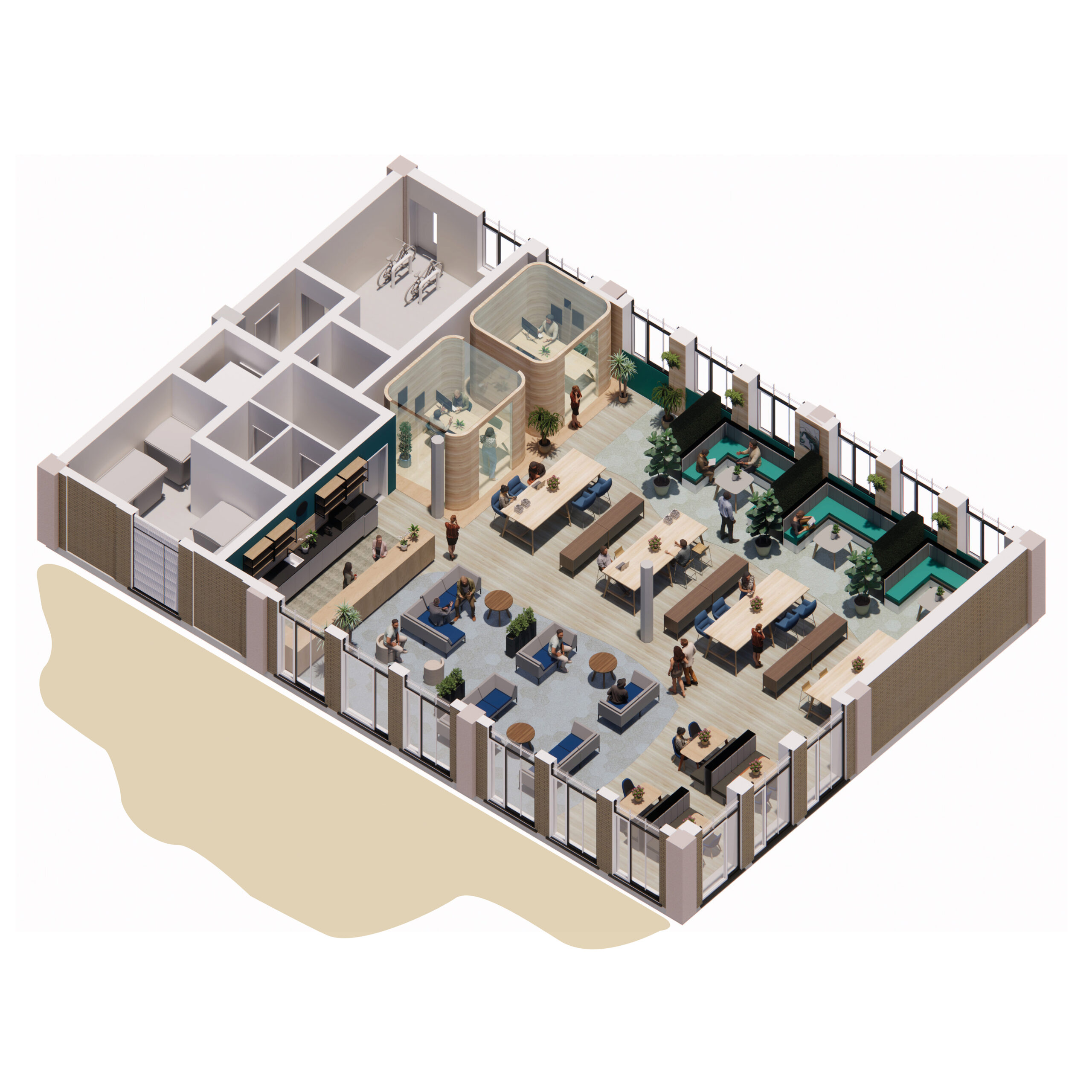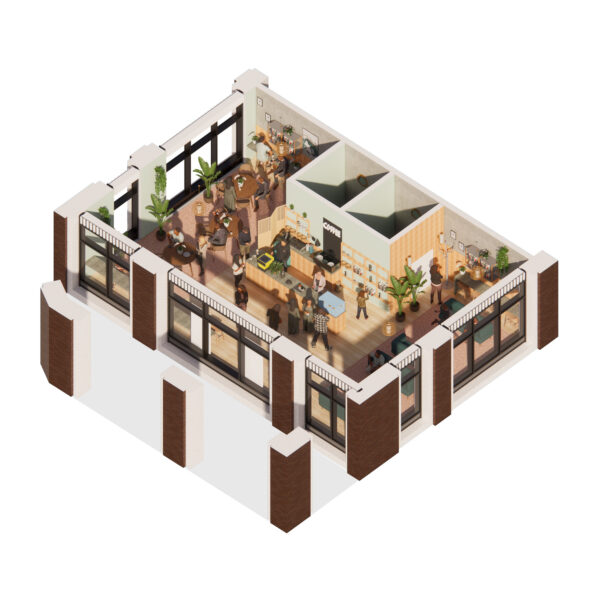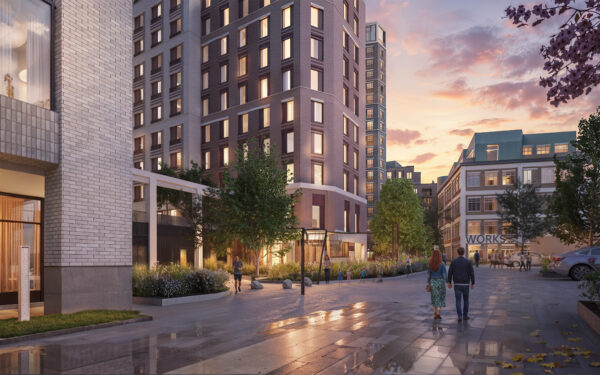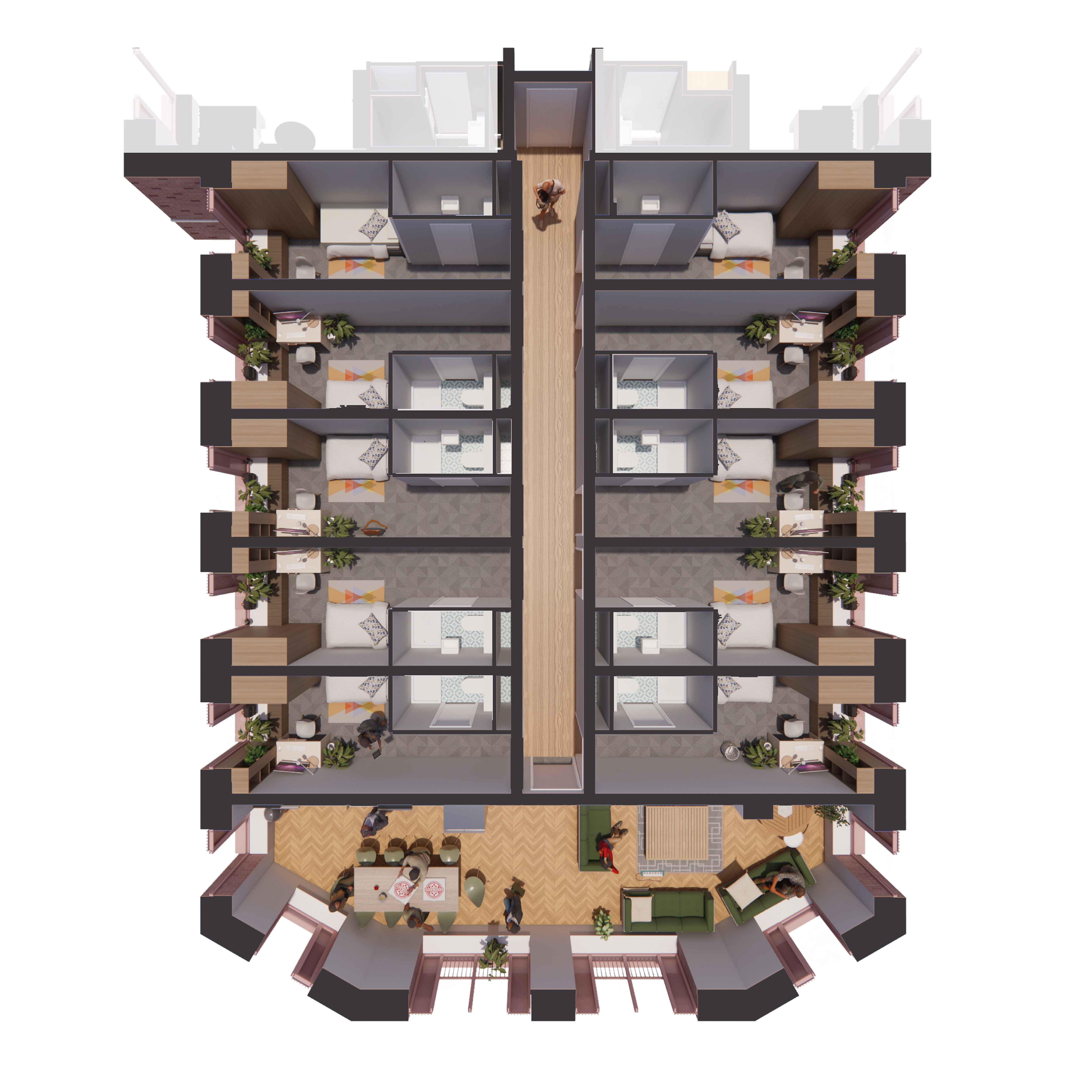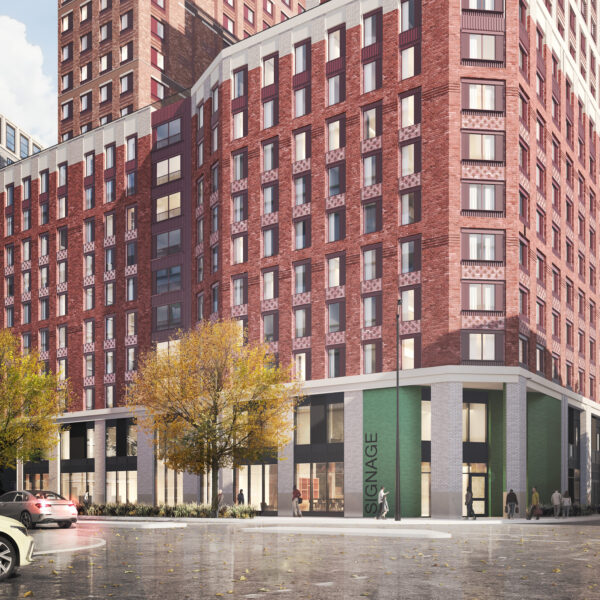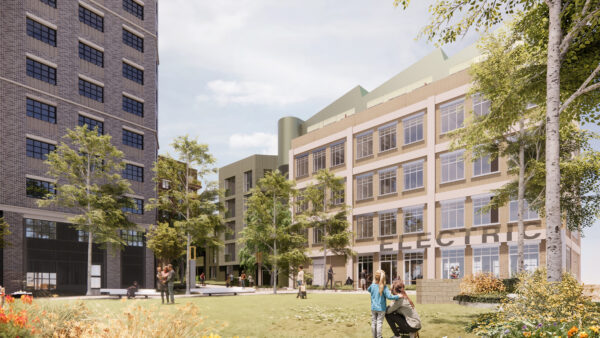Electric Works
The power of community focused design
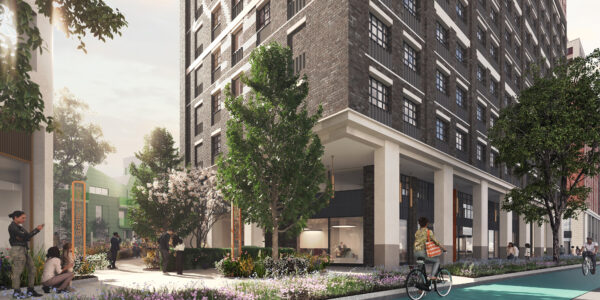

01 Introduction
A new multi-generational and genuinely diverse community in the heart of Woolwich.
This mixed-use development is centred around delivering high quality homes and much needed public realm, through contextual architecture that creates a sense of individuality while paying homage to the town’s unique history. The scheme will create a multi-generational and genuinely diverse community transforming a brownfield site in the heart of Woolwich.
The scheme comprises 930 purpose-built student accommodation beds (PBSA), 425 shared living studios, 93 new homes (40% affordable) and commercial and community spaces. The development replaces the Market Pound storage facilities, creates new hard and soft landscaping, together with ancillary plant and servicing; and associated enabling works.
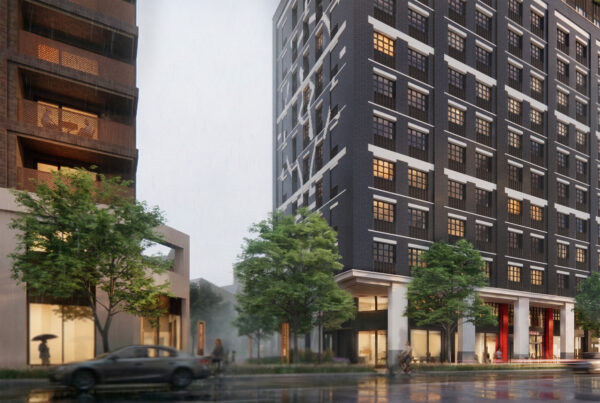
02 Site & building History
Located in Woolwich, an area of rich architectural heritage, the development is located on the former Woolwich Polytechnic and the Drill Hall site within close proximity of The Royal Arsenal, known for armaments and ammunition manufacturing. An extensive collection of historic and heritage assets is held in the Royal Arsenal and displayed within the town centre including the Grade I listed Brass Foundry.
The Electric Works building served as offices for the Electricity Department based on Powis Street. The retention of the Electric Works has acted as a key driver for the masterplan given its importance in celebrating the rich industrial character and history of Woolwich. The Electric Works will play a key role in activating the new public realm and enhancing placemaking.
- 1/3
- 2/3
- 3/3
03 Community and Stakeholder Engagement
The Proposed Development has been subject to an extensive public consultation process with a variety of community groups, residents’ associations, educational establishments as well as the general public. The programme of stakeholder engagement began in February 2024 through conversations and meetings with local political and community stakeholders.
Through that engagement process, the design brief was refined to reflect on the comments and outcomes. The proposed scheme generates a number of social infrastructure and benefits to the locality, in particular 93 new affordable homes, a new children nursery and new public realm.
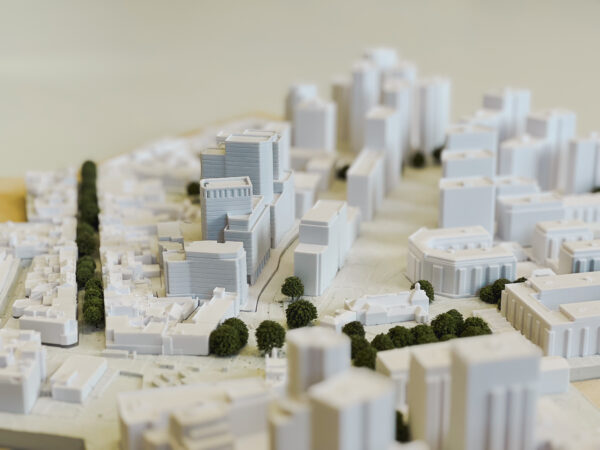
04 Project Narrative
New homes on a Brownfield site in Woolwich Town Centre
The site sits in Woolwich Town Centre and is around a 5-minute walk from the new Woolwich Elizabeth Line Station and the Woolwich Arsenal Station. It offers a huge opportunity to deliver much needed homes for the locality.
A previous planning application submitted on the site in 2020 was refused due to the limited public benefits generated by the proposal. Our approach was to address these issues by creating a scheme which offered as many benefits as possible. A target of 40% affordable housing provision with 70% Social Rented was set and has shaped the design brief and masterplan from the outset.
- 1/3
- 2/3
- 3/3
- 1/4
- 2/4
- 3/4
- 4/4
05 Approach to Design
Industrial heritage as a main design driver
The scheme benefits from a narrative-led architecture that is bespoke to Woolwich, incorporating subtle references to the recurrent architecture around the Royal Arsenal, the Dockyard and Powis Street.
The strategy enhances distinctiveness and legibility, reinforcing a strong sense of place while reflecting the area’s industrial heritage in a contemporary way. Features include multi-tone brickwork, GRC and brick banding, concrete lintels, Crittall-style windows, ribbed metal cladding, and sawtooth roofs.
A local artist will help develop a bespoke motif inspired by Woolwich’s history, subtly integrated into ventilation panels, soffits, and balustrades. Public art is embedded in the façade, while new green routes and pedestrian-friendly pathways improve site connectivity.
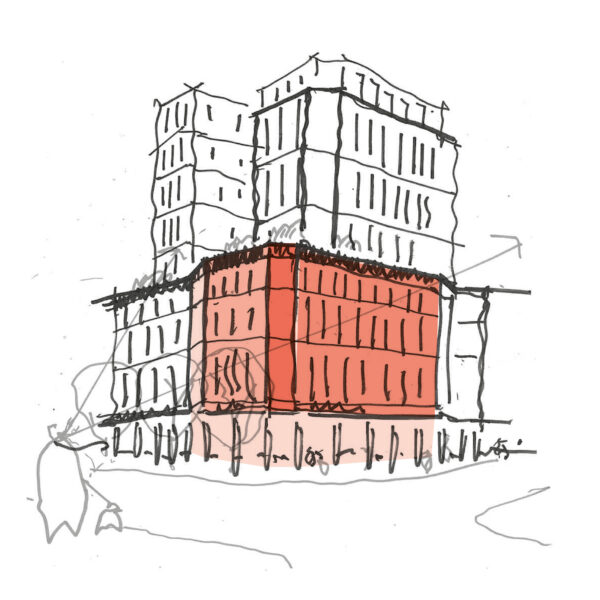
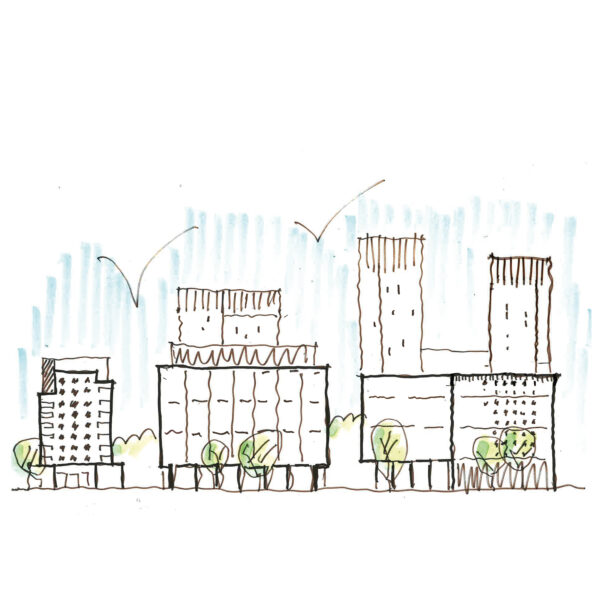
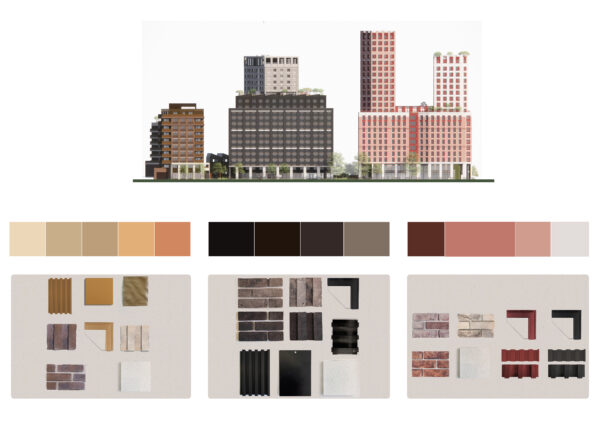
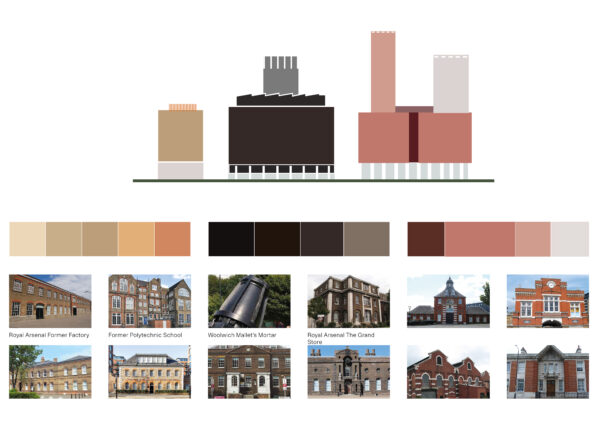
06 Passionate about Delivery
Designing a deliverable scheme
Our approach was to design the scheme very closely with all the relevant consultants – including the cost consultant – to create a viable scheme whilst ensuring the high-quality architecture and aesthetics are safeguarded from heavy value engineering at later stages.
This pragmatic approach allowed us to simplify the design at an early stage and consider details with buildability and viability in mind. Our extensive delivery experience has enables us to design very lean and efficient buildings, minimising the carbon footprint and reducing costs which will eventually be transferred to the end users.
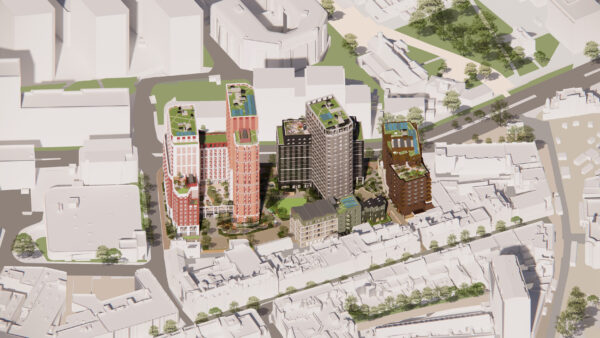
07 Climate Leadership
Our climate leadership is demonstrated through sustainable, forward-thinking design. Blocks A, B, and C target BREEAM ‘Excellent’ and meet GLA and LETI benchmarks, using a fabric-first approach to exceed U-value requirements. The scheme achieves a 0.4 Urban Greening Factor and aims for 10% Biodiversity Net Gain. All blocks are powered by ASHPs, PV panels, and a shared energy centre, with SuDs and blue roofs managing rainwater.
Our Circular Economy strategy includes retrofitting the existing Electric Works, specifying recycled and durable materials, designing for longevity, flexibility, and future disassembly. Early optioneering studies informed carbon reduction across structure types.

08 Collaborators
Consultants including makers and artists we worked with along the way
Client: Re:Shape
Landscape Architect: Studio Bosk
Structural Engineer: Whitby Wood
M+E: Applied Energy
Heritage and Townscape: Montagu Evans
Planning Consultant: Savills
Project Manager and Cost Consultant: KS4
Sustainability and ESG: Carbon.Climate.Certified
Daylight and Sunlight: EB7
Transport Consultant: RPS
Project team
